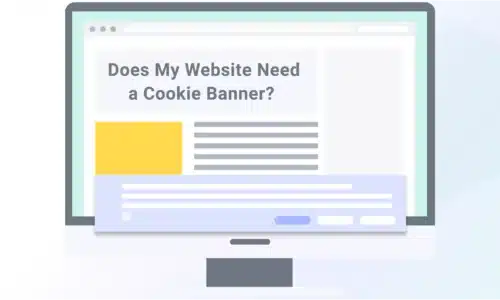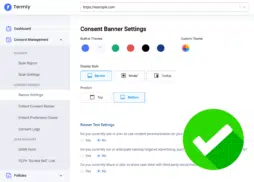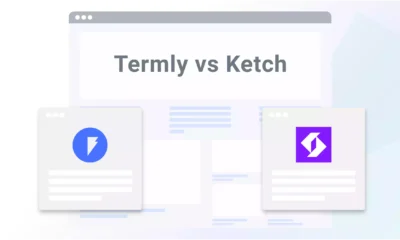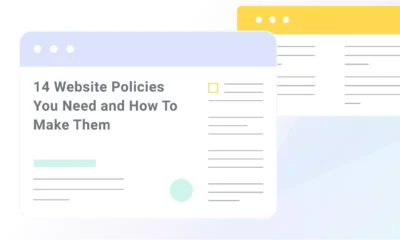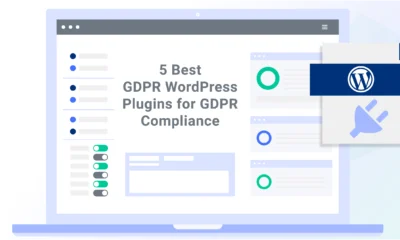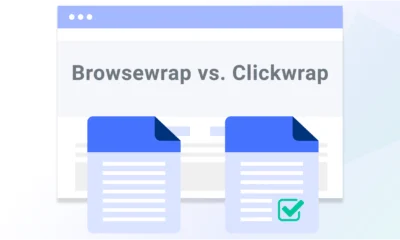Cookie banners are an essential tool that helps businesses align with privacy laws and enables users to follow through on their privacy rights.
Today, several major privacy laws exist, impacting almost every business online that collects, processes, or uses personal user data.
Using the right cookie banner is imperative and can be the difference between a privacy-literate website and a legal violation.
In this guide, learn all about what a cookie banner is, why your website needs one, and what businesses can do to help simplify compliance with applicable laws.
What Is a Cookie Banner?
A cookie banner is a pop up on a website that asks the user to choose their preferences about how cookies are placed on their browser by the site they’re visiting.
It typically features some or all the following details:
- A cookie statement or declaration informing users that your website uses internet cookies.
- A live link to the business’s cookie policy and privacy policy
- A combination of an ‘Accept,’ ‘Deny,’ and ‘Preferences’ buttons
- A link to a preference center where users can change their minds at any time.
When the user interacts with the banner, it communicates the choices to the website, and only the approved cookies get deployed on their browsers.
Do Cookie Banners Help with Compliance?
Cookie banners are essential for businesses that want to comply with privacy laws because it helps ensure the website respects and honors their rights.
For example, laws like the General Data Protection Regulation prevent websites from collecting any data about protected users until explicit, active consent is provided, which includes the use of any internet cookies.
A consent banner like Termly’s uses script auto-blocking technology so no data is collected from these visitors until they’ve interacted with the banner. It also ensures that only the cookies they agreed to are placed on their browsers.
Depending on the law your subject to following, your cookie banner might need a specific type of configuration.
Cookie Banner Requirements
The table below provides some templates for how to set up a cookie banner that aligns with some of the requirements outlined by a few of the most significant privacy laws.
| Privacy Law | Consent Banner Configuration | Other Requirements |
| General Data Protection Regulation |
|
Consent is one of five legal bases for data processing under the GDPR.
It must be granular and cannot be convoluted with agreeing to other policies, like a terms and conditions. |
| California Consumer Privacy Act |
|
Under the CCPA, users also have the right to opt out of targeted advertising or the selling and sharing of their data. |
| Colorado Privacy Act |
|
Under this law, if you collect sensitive information from users, you must first obtain their explicit opt-in consent. |
| Virginia Consumer Data Protection Act |
|
Like the CPA, if you collect sensitive information from users, you first need explicit opt in consent. |
| Brazil’s LGPD |
|
Based on the GDPR, consent is also granular under the LGPD and cannot be convoluted with agreeing to other policies. |
| South Africa’s POPIA |
|
Also based on the GDPR, POPIA requires similar granular or non-convoluted consent from users. |
You can learn more by checking out our guide on laws that impact cookie banners.
Does My Website Need a Cookie Banner?
Every website that uses non-essential internet cookies should have a cookie banner.
I covered why cookie consent banners are helpful for websites that need to follow privacy laws, but it’s a best practice to add one to your site for reasons beyond legal compliance.
For example, using a consent banner is a straightforward way to quickly inform users about the cookies your website wants to use and gives them a chance to agree to them or not.
Being honest about your data collecting practices and the types of cookies you use promotes trust with your visitors because it shows them you respect their privacy and are willing to give them control and choice.
The Different Types of Cookie Banners
Depending on what laws apply to your business and how you want your banner to appear on your website, there are different types you can choose to use.
For example, you can configure your banner for opt-in consent or for opt-out consent.
Opt-in Consent (Active, AKA Clickwrap)
Opt-in consent refers to when a consent banner pops up before any cookies are placed on a user’s browser and asks for them to take an active action to show they read and agree to the use of other cookies.
This is also referred to as active consent, or clickwrap consent.
Below is an example of an opt-in consent banner using Termly’s tools:
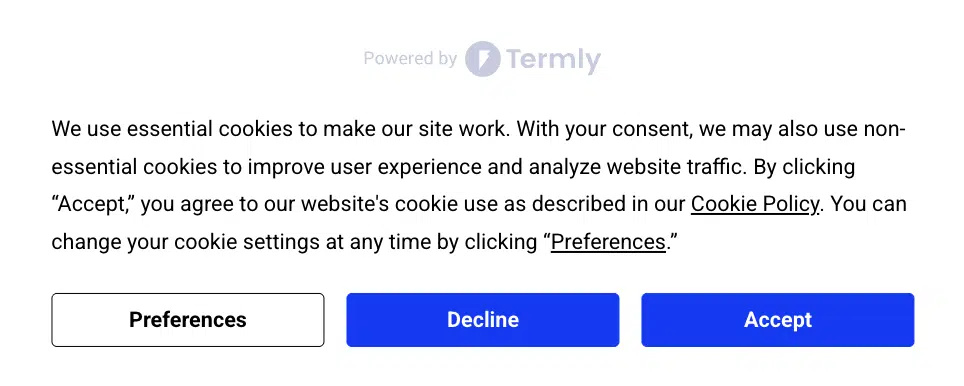
As you can see, it features the following:
- An ‘Accept’ button
- A ‘Deny’ button
- ‘Preferences’
An opt-in banner must give users a chance to say no to the cookies, otherwise, it’s not really considered a form of active, opt-in consent.
Clickwrap consent is known as the more secure and legally compliant method, so if you’re subject to following laws like the GDPR, plan to use this type of consent banner.
Opt-out Consent
Opt-out consent, as required by laws like the CCPA/CPRA, provides users a clear mechanism to opt-out of the sale/sharing of their personal data.
It is distinct from ‘browsewrap,’ which attempts to infer consent from mere use of a site and is widely considered legally risky and insufficient for compliance.
The policy itself then features language like the example below, which implies that the user is expressing their agreement simply by interacting with and using the platform:
‘By continuing to use this website, you consent to out cookie policy’
Below is another example using Termly’s tools, this time, it’s an opt-out consent banner:
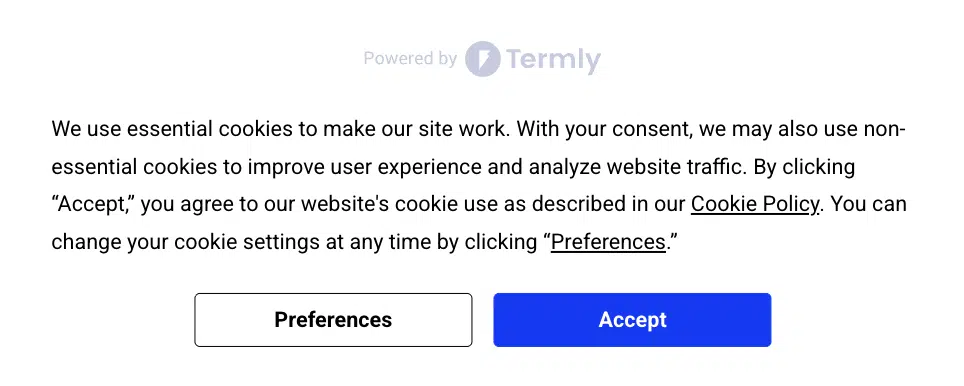
This banner features less than the opt-in banner, and includes the following:
- Accept button
- Link to cookie policy
It’s important to note that this type of banner configuration can help websites comply with U.S. state level privacy laws that don’t necessarily require opt-in consent, but they don’t work under the GDPR.
Different Banner Styles
There are also different designs or styles of consent banners available, including banners, modals, and tooltips.
Banner
A banner is the most traditional type of style and takes up a small amount of screen usually by spreading across the bottom length or top length of a web page.
It’s noninvasive but still easy for users to spot and interact with, as shown in the screenshot below.
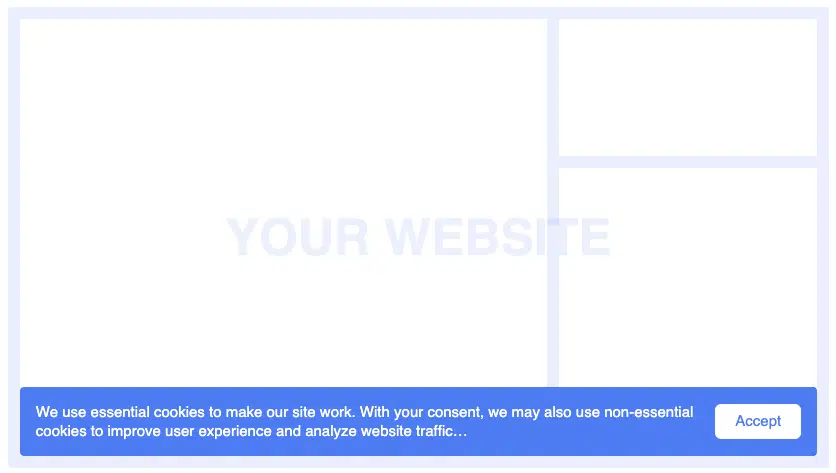
Modal
A modal style refers to when the banner appears in the center of the webpage, this way the information on the page is still visible to users but they also see and must interact with the cookie banner itself.
You can see an example in the following screenshot.
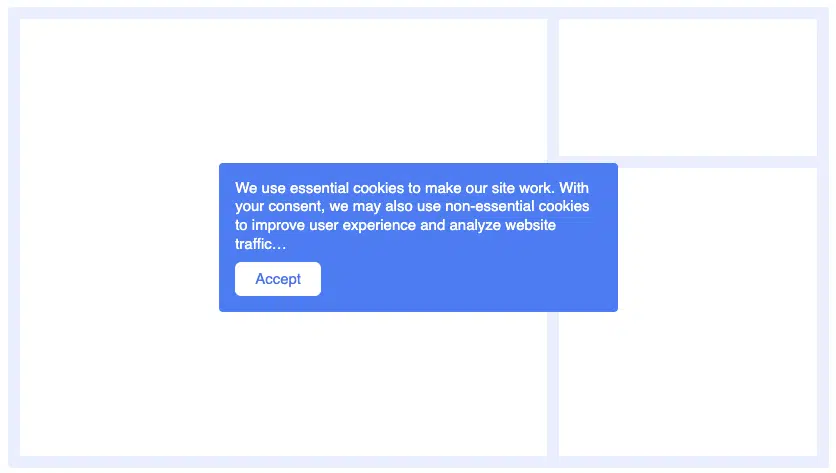
Tooltip
Finally, tooltips are smaller rectangle shaped banners that appear in the corner of a website, be it the top right or left side, or the bottom right or left sides.
They also help ensure that the entire page is not blocked from the user but ensure they still see and interact with the banner. See for yourself below.
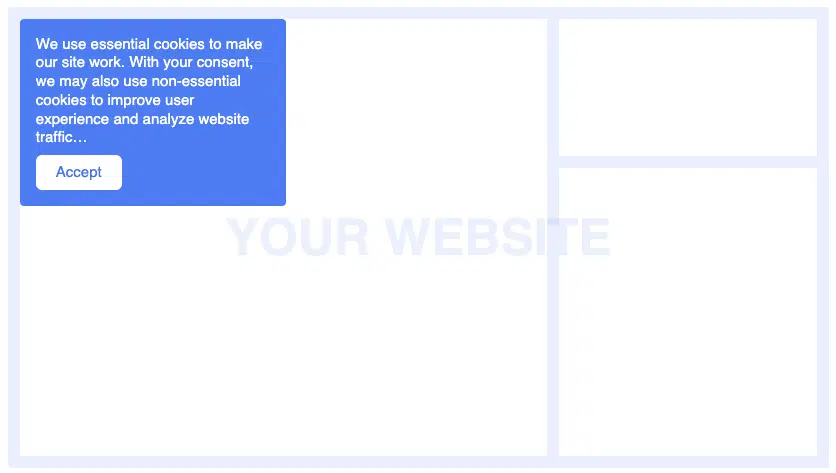
The style of banner you choose depends on a range of factors, like your website design and overall feel. You can also try different using different consent banner styles and comparing the data to text if and how it could affect your overall opt-in consent rates from users.
How To Install a Cookie Banner to Your Website
The directions for installing a cookie banner on your website will vary depending on what company you choose, and not all options are considered easy to use, lightweight, or code-free.
Fortunately, Termly’s cookie banner generator is known as one of the easier options on the market.
Step 1: Scan your website using Termly’s free cookie scanner.
This will find, label, and categorize all cookies your site uses. It also makes you a custom cookie policy automatically.
Step 2: Review the cookie banner settings from your Termly dashboard.

Configure these settings based on if you need opt-in or opt-out settings.
Pro+ plan users can also set up cross-regional consent options to accommodate users in the U.S. versus those in Europe.
Step 3: Embed your automatically generated cookie banner directly to your website.
It’s easy. Just copy and paste an HTML code snippet into your website and your cookie banner will appear!
Get Started By Scanning Your Website Below
How Termly Helps Businesses Create Cookie Banners
Termly helps businesses create custom cookie banners that align with the major data privacy laws, including the GDPR, the CCPA, and more.
Built by our privacy engineers and backed by our legal team, Termly’s cookie banner has the following features:
- Opt-in and Opt-out consent configurations available
- Regional consent settings
- Script auto-blocking
- Multi-language supports
- Preference center
- Preference logs
- Link to cookie policy
- Website scans and cookie policy generator also available
Termly’s consent banner is known for being incredibly lightweight and easy to set up, often requiring little to no coding.
If your website still needs a consent banner, consider using Termly’s today!
Reviewed by Masha Komnenic CIPP/E, CIPM, CIPT, FIP Director of Global Privacy


